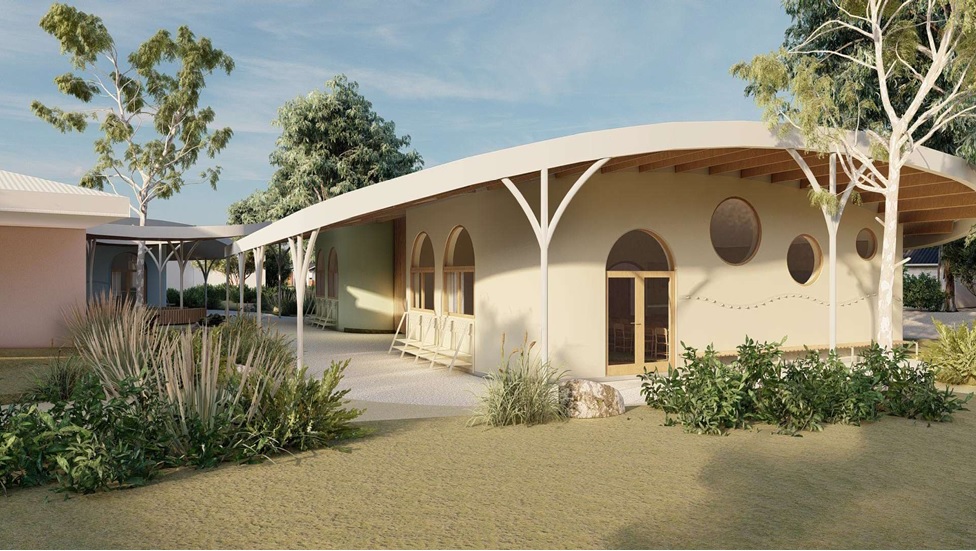Looking Forward First Edition
WCSS Redevelopment Update

Dear WCSS Families,
Welcome to the first edition of our fortnightly communication, designed to keep you informed of the exciting changes ahead for WCSS. As mentioned in the school newsletter, the School Council has long held a vision to transform our inherited public-school buildings into a space that wholly embraces the principles of Steiner education. For several years Council has focused on strengthening and solidifying the fiscal position of WCSS. As we celebrate our 30th year, we are delighted to be in a position to realise our vision. You, our school community, are an integral part of this process and we invite you to contribute your meaningful feedback to this once-in-a-lifetime project.
In 2023, we commissioned Grounded Studios (previously Gresley Abas Architects) to prepare a master plan for the future development of the existing school campus. The driving force behind this was to provide children with the most supportive learning environment possible. This includes optimised use of the existing campus space, improved classroom amenity for students and teaching staff, and improved flow and connection of the school.
WCSS currently operates within a total internal floor area of approximately 1300sqm. The draft master plan brief envisions a future school operating within approximately 2230sqm of net internal floorspace, an overall increase of ~70%.

WCSS Existing Site

Proposed Site Plan
The above images show how the redevelopment aims to best use areas within our boundaries and fluidly connect the new property at 34 Nollamara Avenue, and Sunflower and Gungurra Kindergartens with the rest of the campus. The master plan aims to support future growth of our school by improving offerings to our students, including a larger Performance Space that can comfortably seat our school community, dedicated and fit-for-purpose music spaces, learning support and wellbeing spaces, and classrooms that are optimal for learning and teaching in the creative and innovative ways that we are known for at West Coast Steiner School.
The master plan echoes the best elements of the current layout, continuing to wrap the school around a central outdoor space—the ‘heart’ of our school. This revised compositional approach to the campus planning allows this central open space to be more circular and free-form, blending with nature and welcoming plant and birdlife. It will retain as much of our beautiful existing natural space as possible and enhance our green spaces to form a living oasis in the suburbs.
Our current buildings reflect traditional and dated education design principles of the 1960s: a basic linear plan wrapped around a square quadrangle. It is time for a transformation that aligns with our Steiner aesthetic and sustainability values and our contemporary understandings of best-practice for educational spaces. School Council have engaged Leanhaus Architects, whose mission is to provide healthy, sustainable, and mindful buildings. Leanhaus have consulted with staff and received feedback about the ways in which classrooms could be improved to enhance Steiner learning and provide flexible teaching arrangements to better meet Steiner education principles alongside the diversity of contemporary student needs.
The master plan documents articulate how the form and shape of our new teaching and learning spaces will intentionally provide subtle geometric variations to conventional rectangular rooms. These spaces are larger than the footprint of a typical classroom, to enable flexible teaching arrangements and support principles of inclusivity. The shared hub space between each pair of classrooms provides further support for various modes of teaching and the ability to support a variety of student needs.
Internal spaces are designed to invite natural light and ventilation from multiple sides of each space. This enables well-balanced daylight conditions and promotes good cross-ventilation for sustainable passive building comfort and thermal performance. Physical and visual connections between inside and outside spaces is carefully considered, as well as individualised spaces for different year and age groups aligned with Steiner-informed principles. Reflected in the design, you will see your child’s evolution from a more inward-focused spatial quality in the early years, towards more outward looking qualities for the upper school student.

In the coming weeks, we will share hard-copy prints of plans-to-date around the campus for community members to view. A dedicated email address is ready to receive feedback and questions you may have - development@wcss.wa.edu.au. Our volunteer council members will closely monitor this account, and will share responses to frequently asked questions.
We are thrilled to welcome your input into this opportunity to shape the future of our school. Together, we look forward to creating an optimal learning environment that reflects our values, inspires our students, and ensures our school continues to thrive for the next 30 years and beyond.
Warmest regards,
WCSS School Council
“In a way, our buildings are ourselves, their gestures to the world reflect our human responsiveness and can support our need to connect, belong and gather and to progress in our consciousness.”
Gregory Burgess
